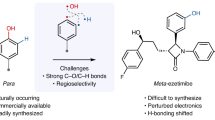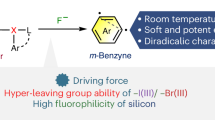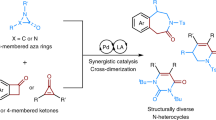Abstract
THE references to Dewar's formula for benzene which are made in the letters of Dr. Turner and Dr. Kenner in NATURE of September 22 and October 13 (pp. 439 and 539) raise a point of some importance in regard to the use of symbols in chemistry. Sir William Bragg's work has revealed the fact that the length of the carbon-to-carbon bond is remarkably constant at about 1·5 Å.U. Dr. Turner, however, following the common convention, represents the para-linkage in his formula for diphenyl by a bond which is perhaps twice as long as those joining adjacent atoms in the ring. It is, of course, possible to maintain the normal length of the bond by distorting the benzene hexagon into a quadrilateral, thus, but there is, I believe, no indication whatever of any such extreme distortion in Bragg's work on the X-ray analysis of crystals of aromatic compounds. This difficulty would not arise if the para-linkage were regarded as indicating only the existence of “free affinities” on the 1 and 4 carbon atoms, or of an electrovalency between them; but so long as this link is treated as a real bond, there does not seem to be any justification for stretching it to an abnormal length, although this is clearly necessary in order to preserve the very well founded idea that the benzene-ring is fundamentally hexagonal in form.
This is a preview of subscription content, access via your institution
Access options
Subscribe to this journal
Receive 51 print issues and online access
$199.00 per year
only $3.90 per issue
Buy this article
- Purchase on SpringerLink
- Instant access to full article PDF
Prices may be subject to local taxes which are calculated during checkout
Similar content being viewed by others
Author information
Authors and Affiliations
Rights and permissions
About this article
Cite this article
LOWRY, T. Stereoisomerism among Derivatives of Diphenyl. Nature 112, 654 (1923). https://doi.org/10.1038/112654c0
Issue date:
DOI: https://doi.org/10.1038/112654c0



